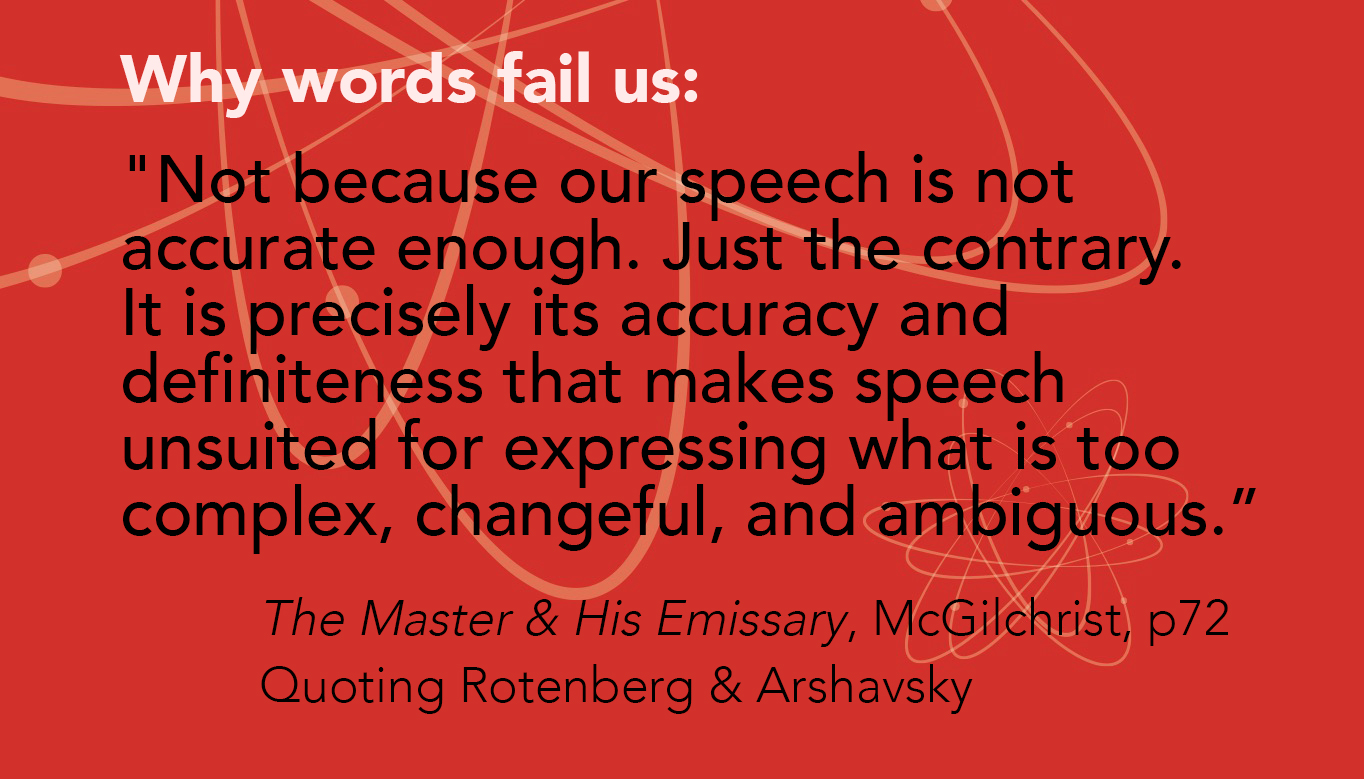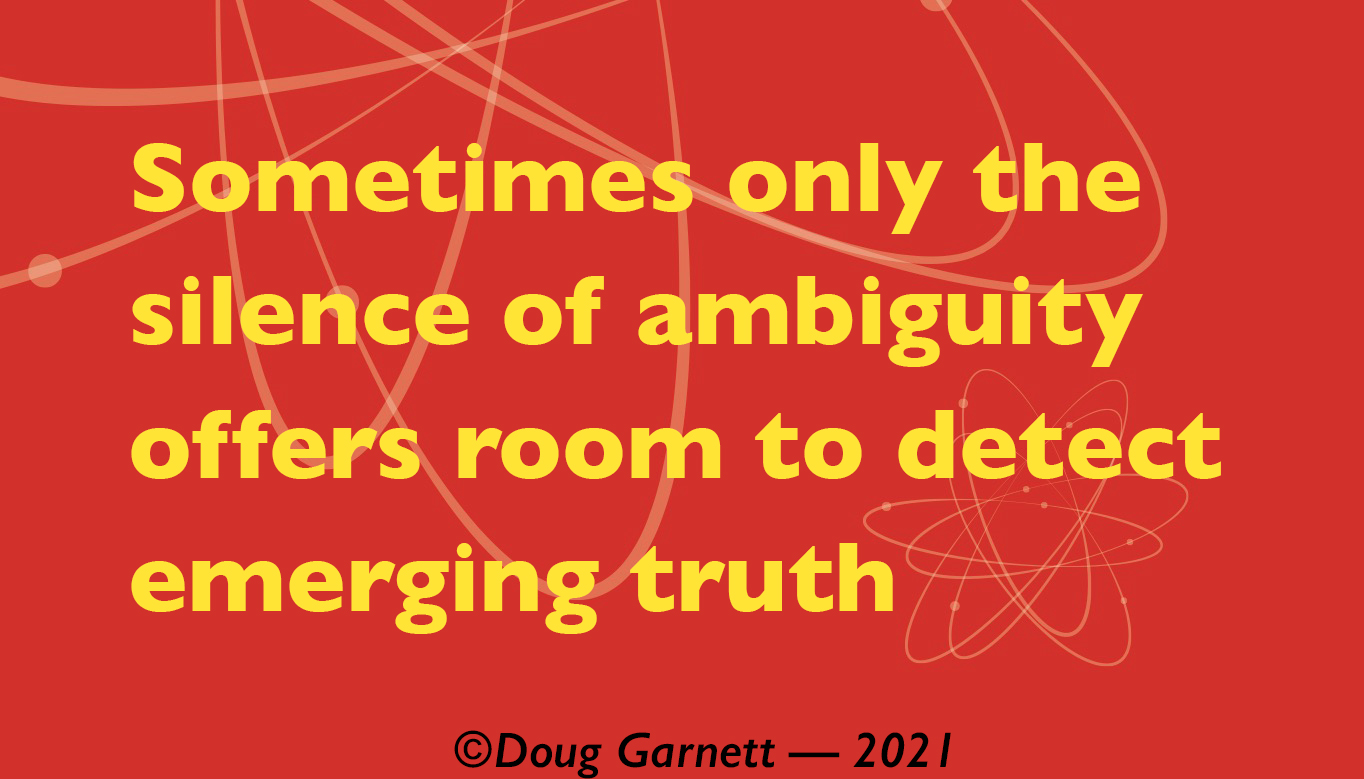
Complexity in Business: New Fundamentals

For that past 3 years I’ve been writing a book on complexity and business using a bit of an archaic approach. Many books are written to build a business or as part of an academic pursuit. My background in liberal arts can’t be satisfied that way. Instead, I’ve been exploring the ideas of complexity to discover new practical value for business. Fortunately my situation (and my partner in life) have allowed me freedom to work this way.
This exploration has led me to reject some of the common fundamentals and replace them with new ones for complexity considered in business. A few of these are the primary topic of this post. To arrive at the new, though, we need to be clear about our start.
Complexity & Systems
Last week’s Strategy in Praxis newsletter from JP Castlin noted that Cynefin considers “the three kinds of systems that exist in nature (and, obviously, organizations): ordered, complex and chaotic.” Chris Mowles, in his book Complexity expresses his own concern about these four quadrant approaches — noting that they are also found at Boston Consulting Group and Ansoff. In other words, the topic of complexity in business is surrounded by a vast array of discussion about systems.
Complexity in science connects complexity with systems yet we must pay close attention to the idea of systems in science. Scientists, in fact, deal with a wide range of systems. The systems Melanie Mitchell engages through algorithms and AI are different from those Suzanne Simard finds in forests which are different from those Stuart Kauffman pursues studying the earliest periods of evolution or those which Brian Arthur explores in the economy. Complexity science has found shared qualities of the systems it encounters yet, also, the precise specifics and details of each system are quite different.
This works for scientists because the term “system” as they apply it has ambiguity. Scientists observe that complex and nonlinear behavior results from the interaction of parts and interactive parts are, by definition, a system. So water molecules interact and create wetness. Parts of an ecosystem interact leading to unique and surprising behavior. Sometimes the parts are individuals in a large homogenous group. At other times, the parts are an array of inhomogenous elements. And sometimes the parts are separate physiological parts within a single entity. A wide range of system definitions are found in complexity science because each investigation needs to be precise for its own success.
It turns out that sometimes we do best by embracing ambiguous definitions. Why? Partly for the reasons Iain McGilchrist notes describing our need for ambiguity in words.
Unfortunately, while the term “system” as used within science carries the ambiguity to be applied to any set of interacting parts, in business the term becomes a problem.
1st Challenge: Nonlinear Response to a Single Word
The term “system” can never have ambiguous meaning in business — it’s been used far too widely. After all, there’s little that businesses obsess about more than procedures, processes, and systems as they make up much of an MBA training.
Thus we end up with systems engineers and hire consultants to do systems analysis. Problems can be systemic and every computer is run by an operating system. Perhaps worst of all, computers used within a business as well as their software are known as “business systems.”
Today, the mere mention of “complex systems” can cause bureaucratic ears to tune in hoping that to find that a sexy new science offers clever ways to rearrange the deck chairs (too often on the Titanic). Sadly, a great deal of writing about complexity in business has become lost in the drudgery of systems.
(That said complexity has been of tremendous value analyzing and helping drive positive understanding of massive human or organizational systems like those used in the military. This, though, is only one way complexity can benefit business. There are far more areas of action which can benefit.)
2nd Challenge: Classifying Systems Violates the Core of Complexity
The mere word “system” leads those in business to demand we be able to classify their systems as complex or not complex. If they’re familiar with Cynefin, then, they might demand classifying things as complex, ordered, or chaotic and then continue with sub-classifications.
It’s no surprise that people want simple answers. Unfortunately, the simple answers are also both simple and wrong.
Complexity inherently contradicts this labeling. Should such labels work it means we can separate — or reduce — the world into separate systems and by treating each system according to its label arrive at success. Except, something complex inherently cannot be reduced. Thus, it must be invalid to say “system A is complex” while “system B is not.” (I suggest a better approach below.)
What do I mean by reducing? In business we are exceptionally skilled, as are scientists, at reducing problems — taking them apart to solve the pieces. This follows the idea that if we solve the parts we will have solved the whole. Fortunately, there are many areas where this works. There are also many areas where it doesn’t because we are facing a problem of complexity.
This reality has been known for a very long time. For example, Edwards Deming quoted Dr. H.R. Carabelli saying “If the whole is optimized, the different parts will not be optimized.” This is an understanding of the complex whole of a business. Parts can only be individually optimized by ignoring interactions with other parts. Any choice to optimize a part means the part stays within a silo without any sense of a tightly connected contribution to the whole.
Those who observe product development with sensitivity know how accurately Deming spoke through their own hard won experience. So do my colleagues in advertising.
New Fundamentals of Complexity in Business
My work around complexity leads me to change how we see complexity in order to see it more clearly and accurately. In many ways, this is similar to a paradigm shift — where we look at the same thing everyone has been talking about yet find more practical ways to engage by taking up a different viewpoint.
In this post, then, let me suggest some important shifts to gain clearer sense of the complex as it interacts with business.
A First Shift: Define to Allow Ambiguity
Fortunately being both clear and allowing ambiguity is a powerful approach. Here is the definition of complexity I use to allow ambiguity:
Garnett’s Definition: Complexity arrives when interactions among parts leads the behavior of the whole to be more than and/or different than a sum of the parts — whether to our advantage, disadvantage, or both.
I strongly recommend we rely on this definition as it is the one definition with enough ambiguity to allow complexity to breathe and thrive. It also solves the continual problem of scientists inventing new, and conflicting, definitions based on their specific, detailed area of study.
Someone recently suggested this was too simplistic. I chuckled. Companies struggle through their entire existence to come to grips with their unique whole result and how it is delivered. So this is no simple statement.  Rather, statements which allow ambiguity quite often appear simple on the surface but involve incredible depth. Thinking of your own company, what is its “whole” result? What impact on employees and vendors arrives from your whole result? What about communities and society? Other commercial partners? What parts come together to make the whole? How does that come about or work? What interactions cause it to happen? To what degree can you affect or influence how that comes together? The whole result of your company, by the way, is never a part of a mission statement.
Rather, statements which allow ambiguity quite often appear simple on the surface but involve incredible depth. Thinking of your own company, what is its “whole” result? What impact on employees and vendors arrives from your whole result? What about communities and society? Other commercial partners? What parts come together to make the whole? How does that come about or work? What interactions cause it to happen? To what degree can you affect or influence how that comes together? The whole result of your company, by the way, is never a part of a mission statement.
This individual was also being entirely predictable as an expert. Areas of learning are complex adaptive systems. Complex adaptive systems tend to increase in complexity (although I maintain human systems do so only until they ebb back into a new simplicity). For human institutions, this means their increasing complexity leads them to lose sight of their reason to exist. At this point, sophistication becomes more important to those in the field than does effectiveness or value. Suggesting this definition (the true value of complexity) to be too simple is typical dysfunctional output from human built complex systems. Hence, the chuckle.
A Second Shift: Doing Business is Inherently Complex
If we forget the above definition, we sever complexity’s unique relation to business success. After all:
A business is only profitable when it delivers a whole result to customers which is more valuable than a sum of the parts.
This is a business 101 fundamental. When businesses think they’ve moved beyond this idea they become businesses likely to fail.
Apple, after all, puts forth the iPad using a very similar set of parts to most other consumer electronics. Yet they do so in a way which arrives at their own unique whole which is far more than a sum of the parts. X-Box does the same. So does Samsung. Most critically, the only reason these companies remain healthy is that the whole is of considerably more value than a sum of the parts.
Of course, complexity affects all areas of business so profitability is not a sufficient proxy to know a company is thriving amid the complex. However, it remains an absolute that the whole delivered by business must be the result of complexity.
A Third Shift: Everything is Complex — And Sometimes We Don’t Have to Particularly Worry About It
If we can’t declare “this is complex while that is not,” how do we know when we have encountered complexity? Brian Arthur’s writings about complexity and economics suggest that markets in equilibrium are an exception — a very useful exception — but that the whole of the economy or the whole of a market is complex and not in equilibrium. Now let’s move the idea to business.
My experience of business is that we live amid the complex yet, fortunately, key parts of business activity are not dramatically affected at certain points in time. This means the far more important question is the opposite:
How do we know when we don’t have to worry much about encountering complexity?
The answer always depends on the unique situation. For example, once a new product has made it to being successfully introduced to the market, there will be a period of time when sales of that product are likely to stay well behaved. In a sense, they enter a time which is similar to markets in equilibrium.
A Fourth Shift: Trust, But Verify
With the above example, we can say “sales won’t likely be heavily affected by complexity for a time” and rely on the product to deliver excellent profits during a time when complexity is likely only encountered only in smaller ways. There always remains risk, though, that sales will unexpectedly be affected by a slowly increasing or sudden complexity.
Perhaps we should call these times the “trust, but verify” times — when we can rely on the profit with the caveat of being aware complexity will, at some point, become a more important factor.
Note that this approach is used in science. Galileo ignored small non-linear (complexity introducing) forces in calculating truths about pendulum. That was an acceptable choice in most cases — but not all. Newton similarly ignored air resistance in calculating the force of gravity. If you will, they found valuable laws by ignoring parts of the complex world — looking at these actions in a vacuum removing all but the key forces. But, complexity science arose because this reductionist assumption is not always valid. And when its not, things get very, very difficult.
In a sense, both Galileo and Newton trusted but verified. Fortunately, as scientists, they were able to experiment to verify. Verifying is far harder in business because we can only very rarely run experiments.
What about the Cynefin systems noted above? Suppose activity today happens within a system fitting Cynefin’s definition of ordered. The true statement is that “at the moment the system behaves in orderly ways although there is risk of complexity affecting it. This system may no longer behave this way in a day, a month, a year, or 10 years.” Cynefin allows for systems to move between classifications. Unfortunately, this doesn’t remove the inherent reductionist approach. Complexity never disappears as a risk though it may diminish or increase for periods of time.
A Fifth Shift: Complexity is NOT Only About Big Things
Another danger with systems language is the pernicious idea that complexity only matters with the big things in business — structures, major strategic moves, market action, etc…
Reality is that complexity is encountered at all levels of a company. Quite often, executive daily work is distant from the complex although individuals on the front line are likely to encounter it regularly. What types of individuals? Those selling products, manning the floor of a a retail store, line workers in manufacturing, all administrative assistants, all marketers, the designers and engineers searching for our next product, or, even, the individual bagging our groceries.
Further, it is naive to expect a company can thrive amid the big complex issues yet remain in denial about day-to-day complex realities. We train our capabilities on the day-to-day realities.
Managing with Complexity
I share these thoughts today to help readers see where this work is leading. Feel free to start conversations in comments here, on Twitter (@atomicadman) or through email. This is a critically important topic for business.
It might be useful to know that I have been involved with complexity for over 40 years having first encountered the ideas in my fall 1981 math class with Martin Walters at the University of Colorado. Martin Walters has now published an interesting environmental math book with complexity at its core. In the 1980s I encountered complexity in numerical math work on the space shuttle program and on other projects in aerospace and supercomputers. From this start in math, science, and engineering I gleaned lessons of complexity which I applied to drive successful new consumer product introductions over 25 years in consumer goods. My instincts for complexity have also added tremendous value through a few decades owning and managing successful companies. (Does this make me a ‘serial entrepreneur’?)
That said, I’ve left a key question open. This idea might sound quite intimidating and even suggest an extreme like “nothing can be managed”? This is not at all true. An MBA brings great value even though most programs are based on an idea that everything is mostly well behaved. During the times things are well behave, many standard management approaches can be quite productive.
The key is becoming savvy at finding the things which are mostly well behaved (at the moment) while also finding where complexity offers advantages or threatens danger. Having done this, we manage the well behaved for profit and stability while managing those with active complex behavior. Managed this way, we need to put different levels of attention around complexity on different situations — depending on what we believe to be at high risk and what we believe to be at low risk.
My hope in the book, then, is to build a practically valuable understanding of this deeply theoretical topic — to demystify what some increasingly mystify. Complexity is not just another theory in business. By understanding complexity we discover ways to leverage the complex to our advantage, to minimize the damage it might do, or even do a bit of both. And that is existentially critical as managing for the complex we increase our success while reducing our danger.
Until next time, be well.
©2022 Doug Garnett — All Rights Reserved
Through my company, Protonik LLC, I consult with companies as they design and bring to market new and innovative products. I am writing a book exploring the value of complexity science for driving business success. Protonik also produces marketing materials including documentaries, websites, and blogs. As an adjunct instructor at Portland State University I teach marketing, consumer behavior, and advertising.
You can read more about these services and my unusual background (math, aerospace, supercomputers, consumer goods & national TV ads) at www.Protonik.net.
Categories: Business and Strategy, Complexity in Business
